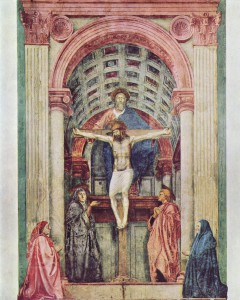I think that Masaccio’s linear perspective illusion would greatly affect the Renaissance period in a way that it would be rich in color and detail. What Masaccio did with the llinear perspective was show a greater view of the surroundings in a person’s vision of view, and instead of just seeing the object that is in front you can now see more objects that are miles away in their shape and color from how the person would usually view it in real life. I believe this effect would really enrich the Renaissance error and would put in a more greater detail of the surrounds. Some people may view this as a negative effect because too much focus is being drawn away from what the real focus should actual be. But to me, the way i see it the more painting/details the better!
Contact Information
Professor Sandra Cheng
Office: Namm 602B
Office Hours: Tu/Th 9-10 am or
by appointment
Office Tel: 718-260-5003
Email: scheng@citytech.cuny.eduHelpful Links
 New York Times Arts
New York Times Arts-
Recent Posts
Recent Comments
- Contemporary art review. | English homework help - Business Essay Help on Sample Exhibition Review
- Contemporary Art review. – Paper Assignments on Sample Exhibition Review
- Topics in contemporary Art Exhibition Paper – Paper Assignments on Sample Exhibition Review
- Topics in contemporary art exhibition paper | art | State University of New York College at Old Westbury - Duepapers on Sample Exhibition Review
- Contemporary Art review. - Homework Essay Writer on Sample Exhibition Review
Archives
Categories
Meta




